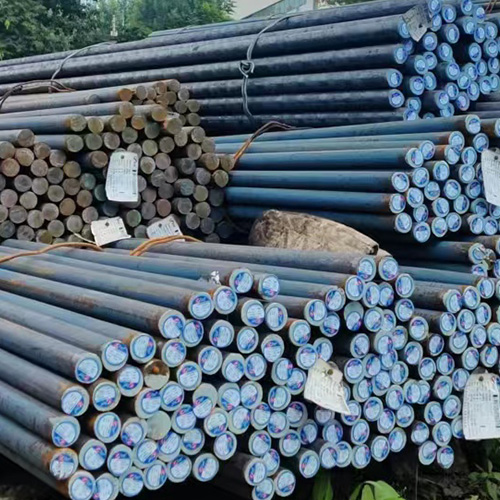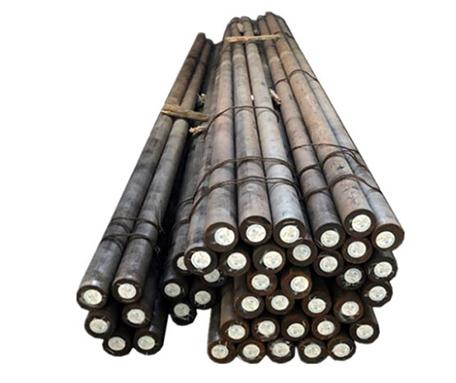Introduction

1018 carbon steel stands out in the realm of metals for its versatility, making it a cornerstone in various industries. From manufacturing to construction, its properties make it indispensable. In this article, we delve into the intricacies of 1018 carbon steel, exploring its characteristics, applications, and advantages.
Understanding 1018 Carbon Steel
1018 carbon steel, also known as low-carbon steel, is a popular choice due to its exceptional weldability, machinability, and affordability. It contains relatively low amounts of carbon, making it suitable for a wide range of applications. Let’s delve into its properties:
| Property | Description |
|---|---|
| Composition | Iron (Fe), Carbon (C), Manganese (Mn) |
| Density | 7.87 g/cm³ |
| Tensile Strength | 440 MPa |
| Yield Strength | 370 MPa |
| Melting Point | 1410°C (2570°F) |
| Hardness | 126 Brinell (annealed) |
Applications of 1018 Carbon Steel
Manufacturing Industry: 1018 carbon steel is highly valued in the manufacturing sector for its exceptional machinability and versatility. It is commonly used to produce a wide range of components, shafts, and fixtures due to its ability to be easily shaped, drilled, and turned on lathes. Manufacturers rely on 1018 carbon steel for its consistency in quality and cost-effectiveness, making it a preferred choice for producing intricate parts with tight tolerances.
Construction Sector: In the construction industry, 1018 carbon steel plays a crucial role in the fabrication of structural components, reinforcing bars (rebars), and bolts. Its strength, durability, and weldability make it an ideal material for constructing various structures, including buildings, bridges, and infrastructure projects. Whether it’s in the form of beams, channels, or plates, 1018 carbon steel provides the structural integrity necessary to support heavy loads and withstand environmental stresses.
Automotive Manufacturing: The automotive sector relies heavily on 1018 steel for its mechanical properties and affordability. It is extensively used in the production of automotive parts such as gears, axles, crankshafts, and drive shafts. These components require a material that can withstand high stress and fatigue while maintaining dimensional stability. 1018 steel meets these requirements, making it a preferred choice for ensuring the performance and reliability of vehicles on the road.
Tool Making: Due to its hardness, wear resistance, and toughness, 1018 carbon steel finds widespread application in the manufacturing of various tools and dies. Toolmakers utilize 1018 steel to fabricate dies, punches, cutting tools, and molds for shaping and forming metal, plastic, and other materials. Its machinability allows for intricate designs and precise finishes, making it indispensable in industries such as metalworking, woodworking, and plastic injection molding.
Agricultural Equipment: In the agricultural sector, 1018 carbon steel is utilized in the production of farm equipment and machinery due to its strength, durability, and corrosion resistance. From plows and cultivators to tractor components and harvesting machinery, 1018 steel provides the reliability and performance necessary to withstand the rigors of agricultural operations. Its versatility makes it suitable for a wide range of applications, contributing to increased productivity and efficiency in farming practices.
Advantages of 1018 Carbon Steel
Cost-Effectiveness: One of the primary advantages of 1018 steel is its cost-effectiveness. As a low-carbon steel alloy, it is relatively inexpensive compared to other types of steel, making it a preferred choice for a wide range of applications. Its affordability allows manufacturers to produce high-quality components and products without significantly impacting production costs, thus enhancing overall profitability.
Weldability: 1018 carbon steel is renowned for its excellent weldability, making it suitable for a variety of welding processes, including arc welding, gas welding, and resistance welding. Its low carbon content minimizes the risk of weld defects such as cracking and distortion, ensuring strong and reliable weld joints. This weldability makes 1018 steel versatile in fabrication processes, allowing for the construction of complex structures and assemblies with ease.
Machinability: Another notable advantage of 1018 carbon steel is its exceptional machinability. It can be easily machined using conventional machining techniques such as turning, milling, drilling, and grinding. The uniform composition and microstructure of 1018 steel result in consistent cutting performance and chip formation, reducing machining time and tool wear. This superior machinability enables the fabrication of intricate parts with tight tolerances and fine surface finishes, enhancing productivity and efficiency in manufacturing operations.
Strength and Durability: Despite its low carbon content, 1018 carbon steel exhibits adequate strength and durability for many applications. It offers a good balance of tensile strength, yield strength, and hardness, allowing it to withstand various mechanical stresses and environmental conditions. Whether in static or dynamic loading conditions, 1018 steel maintains its structural integrity, making it suitable for use in structural components, machinery, and equipment. Additionally, its inherent toughness and resistance to corrosion contribute to its longevity and reliability in service, further enhancing its value in demanding applications.
Versatility: Beyond its individual advantages, 1018 carbon steel’s versatility sets it apart as a highly adaptable material for diverse applications. Its combination of cost-effectiveness, weldability, machinability, and mechanical properties makes it suitable for use in manufacturing, construction, automotive, tool making, and numerous other industries. Whether it’s fabricating complex components, welding structural assemblies, or machining precision parts, 1018 carbon steel offers the flexibility and performance required to meet the evolving needs of modern engineering and manufacturing processes.
Some common applications of 1018 carbon steel:

| Application | Description |
|---|---|
| Manufacturing Components | Shafts, gears, fasteners, brackets, pins, couplings, bushings |
| Construction | Structural beams, reinforcing bars (rebars), bolts, plates, angle iron, sheet metal |
| Automotive Parts | Gears, axles, crankshafts, drive shafts, suspension components, steering components |
| Tool Making | Dies, punches, cutting tools, molds, jigs, fixtures, lathe tools |
| Agricultural Equipment | Plows, cultivators, tractor components, harvesting machinery, tillage equipment, sprayers |
Conclusion
In conclusion, 1018 carbon steel’s versatility and favorable properties make it a vital material across various industries. Its combination of affordability, weldability, and machinability ensures its continued relevance in manufacturing, construction, automotive, and tool making sectors. Understanding its properties and applications can aid in optimizing its usage, contributing to enhanced efficiency and performance in diverse applications.
As industries evolve, 1018 carbon steel remains a reliable choice, offering a balance of properties that meet the demands of modern engineering and manufacturing.
With its wide array of applications and enduring popularity, 1018 carbon steel continues to shape the world around us, serving as a testament to the enduring legacy of this remarkable material.
FAQ
Q:Is 1018 carbon steel suitable for high-temperature applications?
A:While it can withstand moderate temperatures, it may not be suitable for high-temperature environments due to its low carbon content.
Q:Can 1018 carbon steel be hardened?
A:It is not typically hardened through heat treatment; however, it can be case hardened for specific applications.
Q:What are the limitations of 1018 carbon steel?
A:Its low carbon content restricts its use in applications requiring high strength or hardness.
